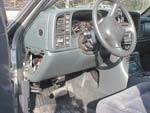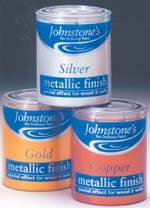Materials
Blow Molding Gets Green Light in Detroit
Technical blow molding is changing the contours of automotive interior trim, load-bearing floors, seat-back systems, and under-hood ducting. Favorable economics, process refinements, and the emergence of tailored materials and equipment are taking the brakes off blow molding's earlier limits, and pointing a way to cost cutting.
Read MoreNanocomposites Broaden Roles in Automotive, Barrier Packaging
Nanocomposites are gradually gaining acceptance in the mainstream of global plastics processing. These polymer compounds, containing relatively low loadings (under 6% by weight) of nanometer-sized mineral particles, are beginning to show up in polypropylene and TPO-based automotive exterior claddings, barrier beer bottles, nylon packaging films, polyethylene pipe and wire/cable coatings, and more.
Read MoreIn-Line Compounding of Long-Glass/PP Gains Strength in Automotive Molding
Another approach to long-fiber thermoplastic (LFT) molding is gaining credibility for producing a range of structural and semi-structural automotive parts. It is called direct LFT processing, and is already widely practiced in Europe.
Read MoreMaterials (K 2001 Preview)
New materials at K 2001 are weighted heavily toward the engineering variety, especially nylons, acetals, and TP polyesters. A large handful of polypropylenes round out the major news.
Read MoreSee-Through Plastic Cans Enliven Paint Packaging
Improved technologies for molding see-through plastic paint cans—both clear stretch-blow molded PET and translucent injection molded PP—are adding dash to paint marketing in the U.K. These trends present a lively example to the U.S., where gray steel cans still dominate the shelves in retail paint packaging.
Read MorePolymers as Additives
A pinch of one resin can teach another one new tricks. Take a look at the promising results with four novel property enhancers for thermoplastics and thermosets.
Read MoreNow They Want Plastics To Be Heavy?
Plastics weigh in with added design freedom and environmental friendliness—especially when the alternative is lead.
Read MorePlastics That Conduct Heat
Helping electronics, lighting, and car engines keep cool are some new roles for hermoplastics that are formulated to replace metal or ceramic.
Read MoreNew Polypropylene/PPO Alloys Fill a Cost/Performance Gap
A brand-new family of thermoplastics for automotive and other markets offers an intermediate range of cost and performance between those of TPOs and engineering resins such as nylon, ABS, long-glass PP, and some modified PET and PBT materials. GE Plastics, Pittsfield, Mass., has broadened its Noryl range of PPO alloys by adopting a new matrix material: polypropylene. New patent-pending technology allows the incompatible PP and PPO materials to be blended so as to create new balances of stiffness, toughness, and heat resistance in a moderate price range. Initial Noryl PPX grades are priced between $1.20 and 1.80/lb.
Read MoreMetallocene PP & PE Weld Strongly to Each Other
Multilayer film applications such as packaging and diapers are just two areas that could benefit from spot welding (instead of gluing) polyethylene to polypropylene. Normally these two resins show poor adhesion to each other. But two years of research at the University of Minnesota in Minneapolis and at ExxonMobil Chemical in Houston show that metallocene-catalyzed polyolefins can weld to each other with bond strengths much greater than are possible with conventional Ziegler-Natta catalyzed polyolefins.
Read More








